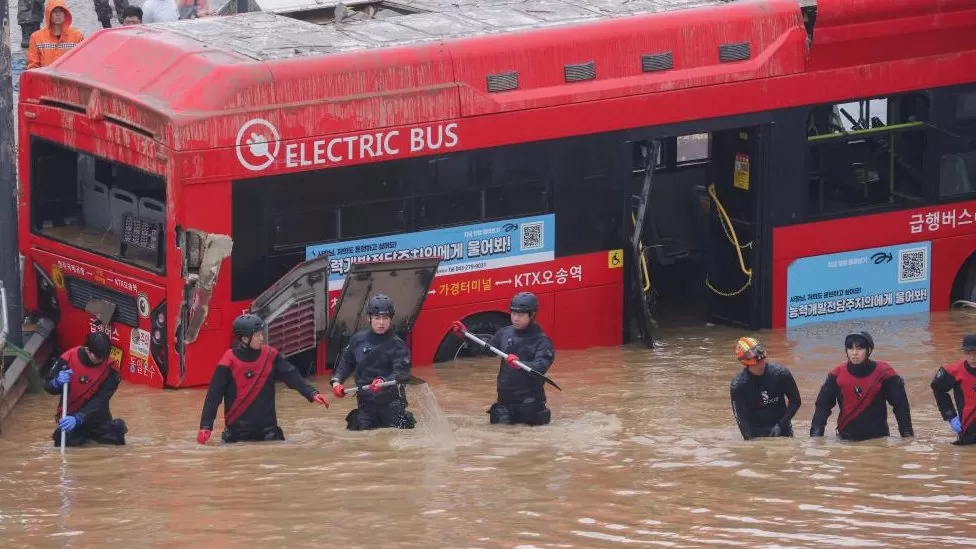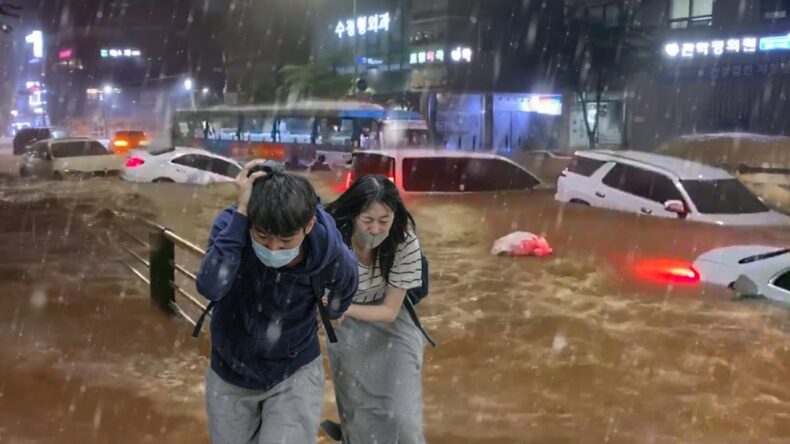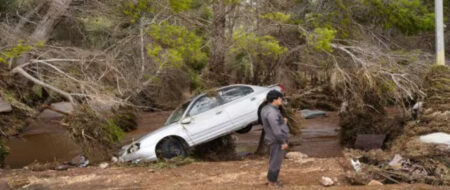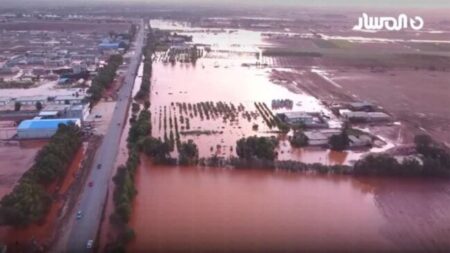Nine bodies have been found by rescuers trying to reach automobiles trapped in a flooded tunnel close to the South Korean city of Cheongju. Passengers and drivers were stranded in their vehicles because flood water from days of heavy rains flowed into the subway too quickly.
After widespread flooding, landslides, and power outages, at least 35 people have died in total. There are more than ten persons missing. Although the exact number of individuals still trapped inside the 685-meter-long Osong, South Korea, tunnel is unknown, 15 vehicles are believed to be buried. A bus’s interior yielded many of the dead. On Saturday, nine survivors were saved.
The majority of the other casualties have occurred in the mountainous North Gyeongsang area, where entire homes have been destroyed by landslides.
South Korea reportedly received around 300mm (11.8in) of rain on Saturday. According to the Korean Meteorological Association, the nation normally receives 1,000mm (39.4in) to 1,800mm (70.9in) of precipitation per year, but a large portion of that does fall during the summer.

Floods causing havoc in South Korea (Credits: Reuters)
Floods affecting different areas in South Korea
Only the tops of rooftops can be seen peeking out of the brown sludge and flood waters visible in aerial photos from flood-affected communities. Numerous local governments have issued evacuation orders that have affected thousands of people. Prime Minister Han Duck-soo has urged the military to assist with the rescue operations.
Around 6,400 residents were evacuated early on Saturday (local time) after the Goesan Dam, also in North Chungcheong, started to overflow, according to the agency. Several low-lying communities close to the dam were drowned, along with many of the roads that connected them, trapping some individuals inside their homes.
A landslip in North Chungcheong resulted in a train derailing late on Friday. The train was not hauling passengers at the time, but one of the engineers was hurt. All slow trains and some of the country’s bullet trains have been suspended, and other bullet services will see disruptions, according to Korail, the nation’s national rail operator.
The Korea Meteorological Administration anticipated further precipitation through the following Wednesday. It issued a warning that the weather poses a “grave” risk.
Over the past two weeks, excessive rain has triggered floods and landslides in a number of nations, including India, China, and Japan.
While there are many causes of floods, experts claim that a warmer atmosphere brought on by climate change increases the likelihood of catastrophic rainfall. More droplets and heavier rainfall, sometimes in a shorter period of time and over a smaller region, result from the atmosphere’s ability to hold more moisture as the climate warms.













